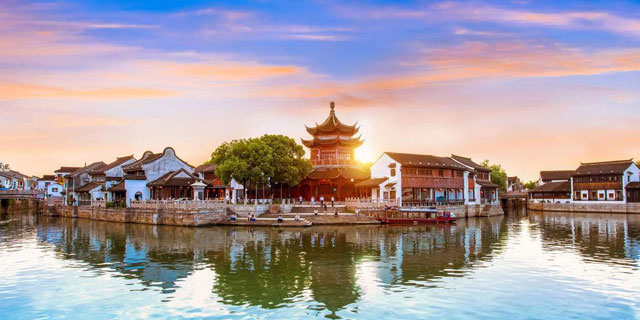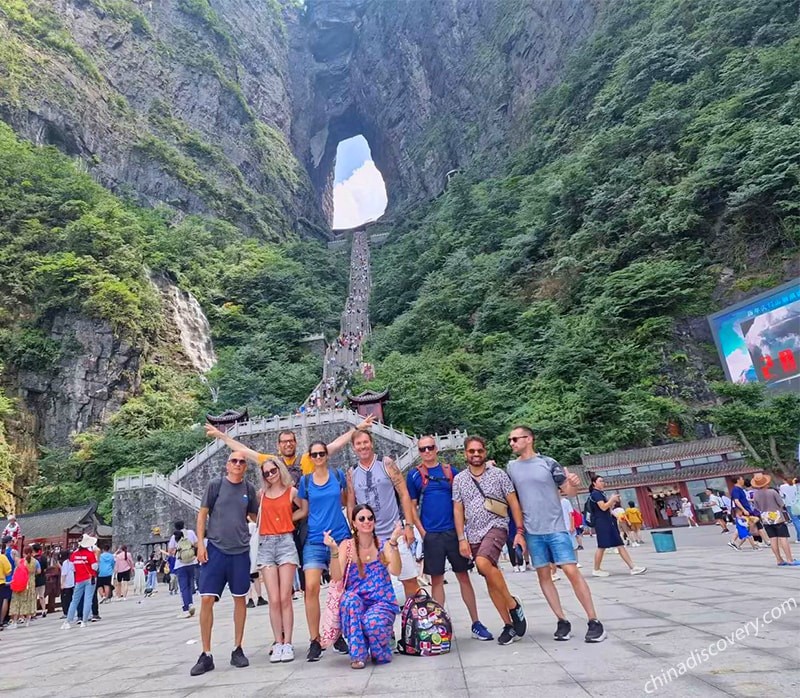20 Pro Tips To Savoring the Best of Chinese Cuisine
20 Pro Tips To Savoring the Best of Chinese Cuisine
Blog Article
Top 10 Tips To Explore Local Cuisines Of China
1. Learn about the Eight Culinary TraditionsTip: Be familiar with the eight main Chinese dishes: Sichuan, Cantonese, Shandong, Jiangsu, Fujian, Hunan, Anhui, and Zhejiang. Each one is distinctive in its flavors, cooking techniques and food items.
Pro: Plan your culinary experiences according to your personal preferences.
Con: It can be difficult to keep track of the subtleties of every cuisine.
2. Local specialties are accepted.
Try the regional specialties Try the regional specialties, such as Peking Duck (in Beijing), Xiaolongbao or Hot Pots in Chengdu.
Pro: It offers an authentic and rich cultural dining environment.
Cons: You may be restricted in the food choices you can make when you are in a specific region.
3. Pay Attention to Regional Flavors
Tip: Sichuan dishes are spicy and dulling. Cantonese foods are light and fresh. Jiangsu food is sweet and delicate. Choose dishes that match your tastes and spice tolerance.
Pro: You will be able to choose dishes suitable for your palate and avoid having them sent back.
Con: Certain flavour profiles might require some testing.
4. Discover Street Food
Try the street food in all cities. For example In Beijing you can purchase Jianbing which are savoury crepes. In Xi'an they have Roujiamo, which is Chinese burgers. Try local snacks.
Pro: Street food provides an affordable and practical way to sample local cuisine. It also gives you an insight into the everyday life of the residents.
Con: Hygiene concerns can be present in certain instances. Select vendors who do a lot of business.
5. Learn Basic Dining Etiquette
Knowing Chinese eating habits is crucial. For example, eating meals with your family members and not sticking chopsticks up in the rice are all a part of this.
Pros: This shows that you value local traditions while enhancing the dining experience.
Con: It takes time to learn and adapt to a new etiquette.
6. Get local recommendations
Tips: Locals are often aware of the best restaurants and dishes within their region. Don't be shy to ask for assistance.
The greatest thing is that you can discover hidden treasures that are not just tourist traps.
Con: Language barriers can make communication challenging.
7. Be Open to Unfamiliar Ingredients
There are many regional cuisines have ingredients like stinky tofu bamboo shoots, bamboo or lotus roots. Be curious about unfamiliar foods.
Pro: You will learn to appreciate Chinese food and broaden your palette.
Con: Certain meals might not be suitable for your taste or dietary needs.
8. Make dietary restrictions accomodating
Tips: Learn some phrases in Mandarin to communicate preferences or allergies, for example "Wo bu chi" or "rou" (I don't eat meat).
Pro: It guarantees that you have a more comfortable experience.
Con: Certain dishes may have limited options for certain food restrictions.
9. Mix regional drinks with your food.
You can try local drinks such as tea from Fujian or Baijiu in north China.
Pro: It adds depth and enhances the taste of food.
Pros: Some people might not enjoy the strong flavor of baijiu.
10. Avoid Overordering
Tip: Chinese meals are usually served family-style. Order conservatively, and then increase according to your needs.
Pro: Reduces food waste and guarantees that you are able to try a variety of foods.
Cons: The wide variety of products available can make it tempting to buy too many.
Pros to exploring regional cuisines in China
Explore a range of tastes and methods.
Cultural Insight: Gain a greater understanding of regional traditions and identities.
Cost-effective: Local food and snacks can be found at affordable prices.
Memorable Experiences: Trying iconic dishes from their place of origin makes lasting memories.
Pros and Cons of Exploring Local Cuisines in China
Hygiene Concerns Some restaurants or street food may not be up to international sanitation standards.
Language barriers. Menus and explanations in Mandarin could hinder the ability to place orders.
The unfamiliar flavors and textures some people some flavors or textures could be new to you.
Dietary limitations: In certain regions, vegans and vegetarians and those with allergies to foods may find it difficult.
You can conquer any obstacle by following these tips and staying curious. Have a look at the top check out this iconic site for website examples including eating in changchun, some gifts from china, shopping in xi an, wuxi a shining pearl of taihu lake, the origin and history of the mysterious chinese dragon, honey lake country club, chinese knot which has a long history and a symbolic meaning, eating in urumqi, splendid china tour.html, guanlin temple and more.
Top 10 Tips For Visits To Famous Temples During The Seasonal Visits In China
1. Visit during the off-season, usually from November to January. The weather will be cooler, and there will be less tourists.
Pro: It is quieter and gives peace and tranquility.
Con: The weather could be colder, which could cause temple tours outside to be more uncomfortable.
2. Prepare for Extreme Weather Conditions
Tips - Temperatures can vary dramatically in different seasons. Winter can be very cold, while summers can be scorching. Be sure to check the weather forecast and pack accordingly.
Pro: Having prepared for any weather situation, you'll feel comfortable on your visit.
Con: Having to pack for extreme weather conditions can be difficult if you travel light.
3. Spring and Summer Visits for Vibrant Flora
Go to temples in spring and summer to see beautiful gardens and blooming flowers. You can also enjoy lush landscapes surrounding the temples.
The beautiful scenery adds to the enjoyment of visiting temple grounds.
Con summers can be very hot and crowded at holidays, particularly national ones.
4. Think about Festivals and Special Events
TIP: Plan your trip during traditional celebrations like Chinese New Year (January/February) or the Mid-Autumn Festival (September). These special times allow you to take part in the rituals, celebrations and be a part of the lively culture of the temple.
Pros: There are numerous temples that offer traditional and thrilling events. This is a fantastic method to learn about a different culture.
Con: Temples tend to be extremely busy, and hotel prices can spike in the summer months of festivals.
5. Beware of Peak Holiday Seasons
Avoid visiting temples during high tourist seasons (e.g. Chinese Year of the Pig, Golden Week October) because they could be crowded.
Pros: Peaceful and tranquil visits with no crowds. It is an uplifting experience.
Con: You might be missing out on certain festival events that take place during peak times.
6. Check for Winter Temple Closures
Be sure to verify the time ahead. Some temples, especially in northern or remote areas, may only be accessible during specific hours or close entirely during winter. Be sure to check ahead.
Cons: You won't be wasting time and you can organize your other activities.
Con Cons: Temples that are closed or have reduced hours could disappoint.
7. Early Morning Tours to Summer
Get there early to be able to avoid the noon sun's heat. A lot of temples are begin opening at dawn. This is a tranquil period with fewer visitors.
The cooler temperatures as well as the absence of crowds makes for more tranquil vacation.
Cons: Early waking up is required, which might not be suitable for everyone.
8. Be Prepared to Rain in Summer
It can be very rainy in summer, particularly in southern China. If you are planning to visit during this time bring an umbrella or rain gear so you can stay dry.
Pro: Even in rain, you can still enjoy the beauty of the temple.
Con: Rain could disrupt outdoor activities and make temple grounds slippery.
9. Visit temples in the mountains during the fall.
Autumn foliage and pleasant weather makes it a perfect time to visit the mountain temples (e.g. Mount Wutai, Mount Emei).
Pros: The scenic views and cooler temperatures make outdoor activities and hiking more enjoyable.
Con: Popular mountains temples still draw crowds particularly on weekends and during holidays.
10. Examine the Lunar Calendar in Specific Cases
Tips: A lot of temples in China follow the lunar calendar and some rituals or events are tied to particular lunar dates. The calendar can be used to plan your travel plans and to attend important occasions like the Lantern Festival or Buddha's birthday.
Pro: Unique cultural experiences and deeper understanding of the spiritual practices of local communities.
Cons: It could take more time to plan and research on the lunar calendar and some events might not be aligned with the dates of your travel.
The Benefits of Going to Chinese Temples in Season
Fewer crowds: Visits during the off-season are quieter and more reflective.
Cultural Festivals: These events provide a deeper understanding of local religions and cultures.
Scenic Beauty: The season of spring or autumn is the best time to go for breathtaking landscapes, stunning gardens and temples.
Cooler Weather: Winter and autumn offer milder temperatures for temple exploration.
Cons of Going to Chinese Temples during the season
Uncertain Weather: Winter may be cold, while summer could be too hot, which can affect your ease of living.
Temple Closures: Some temples might have restricted hours or be closed during off-seasons or during extreme weather conditions.
During festivals during the year, temples can become packed. This makes it hard to enjoy the peaceful environment of the temple.
Special Events Some events during the season and ceremonies are not permitted to take place in the event that you arrive after the proper time frame.
When you select the appropriate time to visit and plan accordingly, you'll be able to ensure a more enjoyable and memorable experience in the famous temples of China. Knowing the seasons of the temples will allow you to maximize your visit, whether you want peaceful solitude or a cultural festival. Take a look at the best explore this top-rated location for site info including eating in guilin, wang zhaojun one of the four beauties in ancient china, eating in shangri la, biking tours, eating in shangri la, china built the worlds deepest high speed railway station under the great wall, jiuzhaigou, chinese kites a phoenix shaped kite, snow beer the best selling beer in the world, eating in changchun and more.